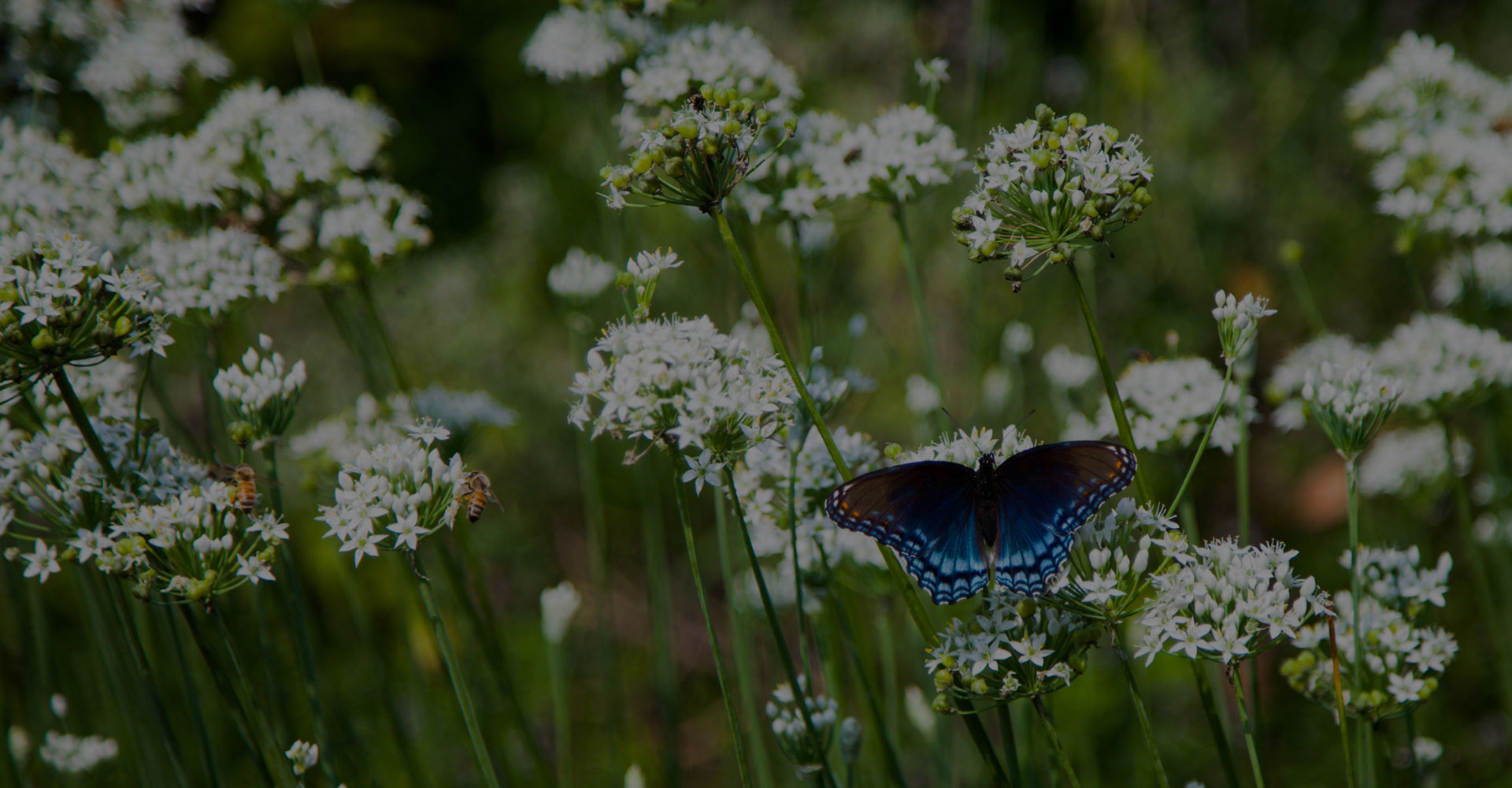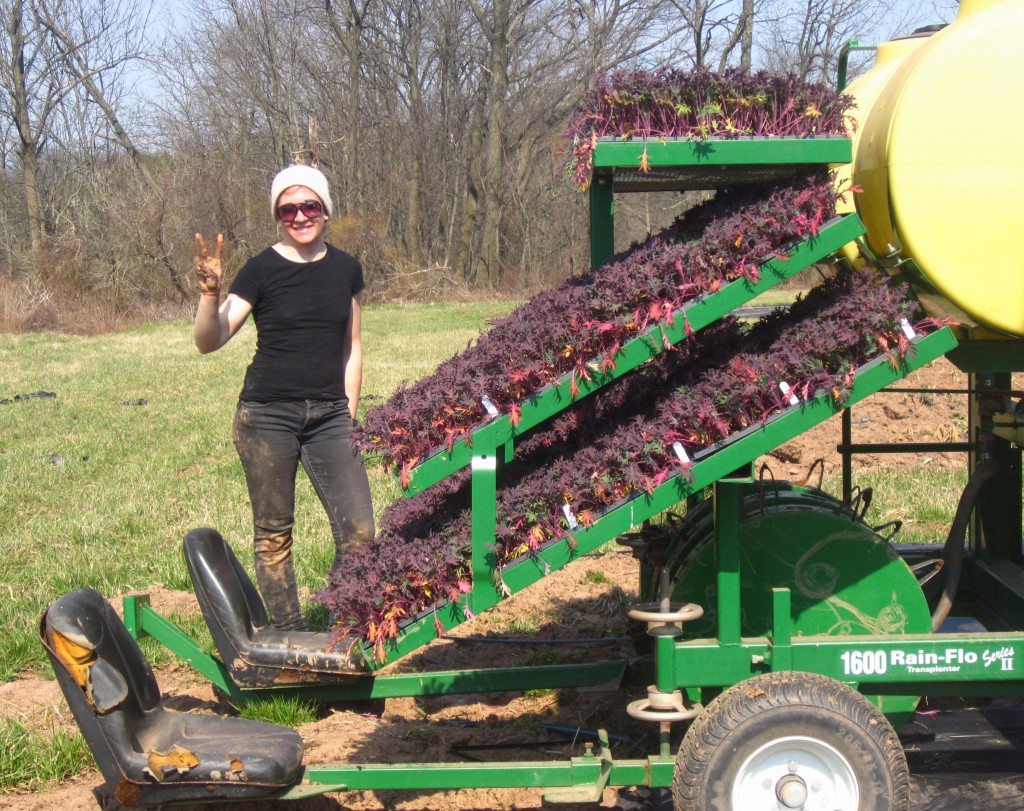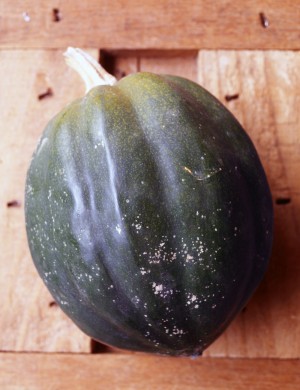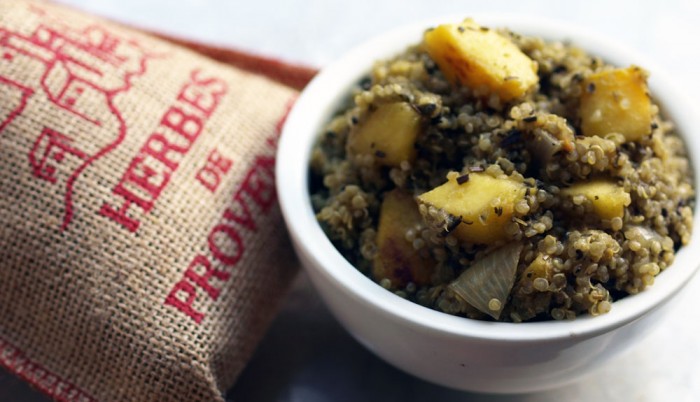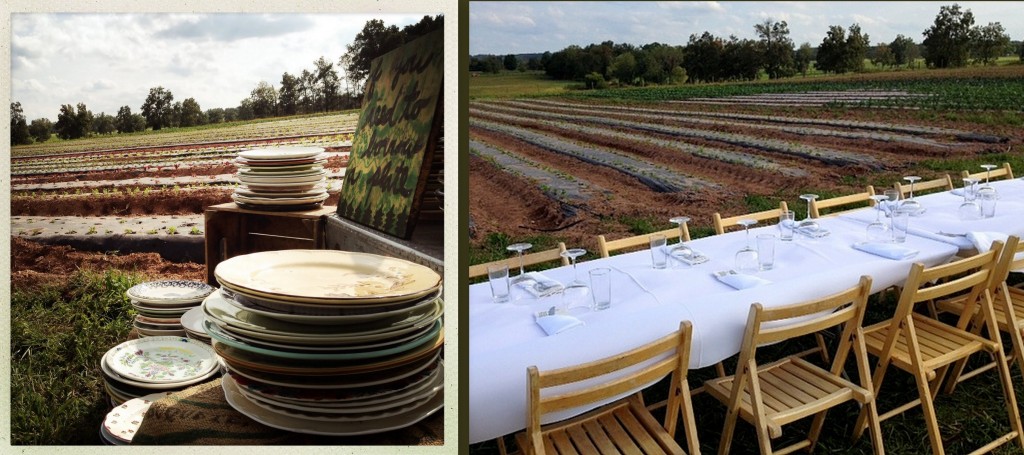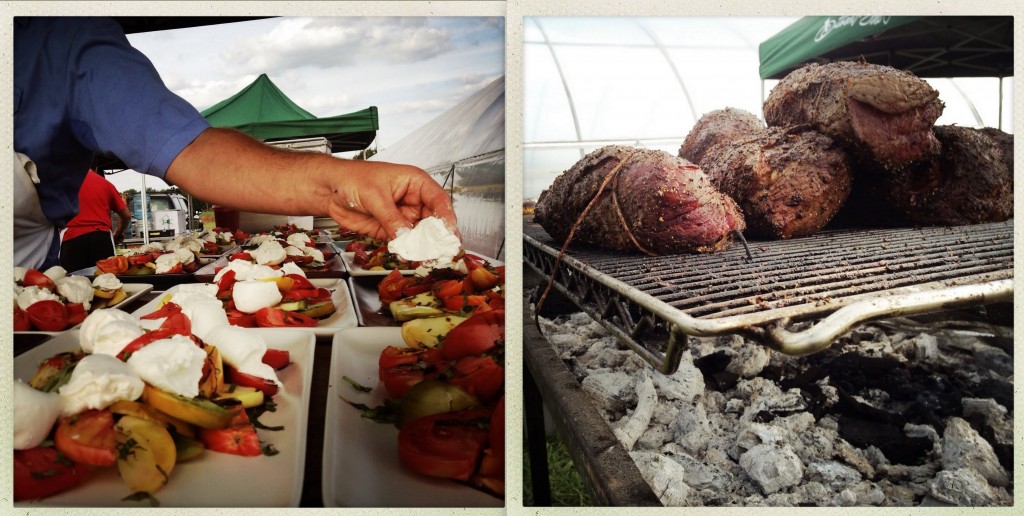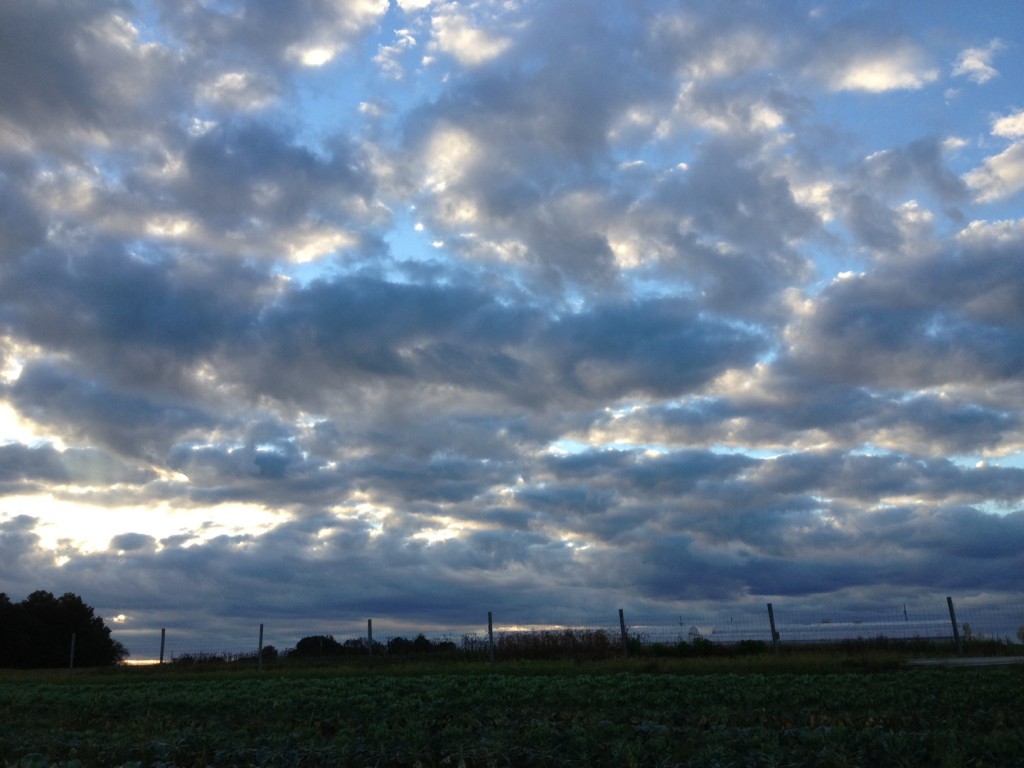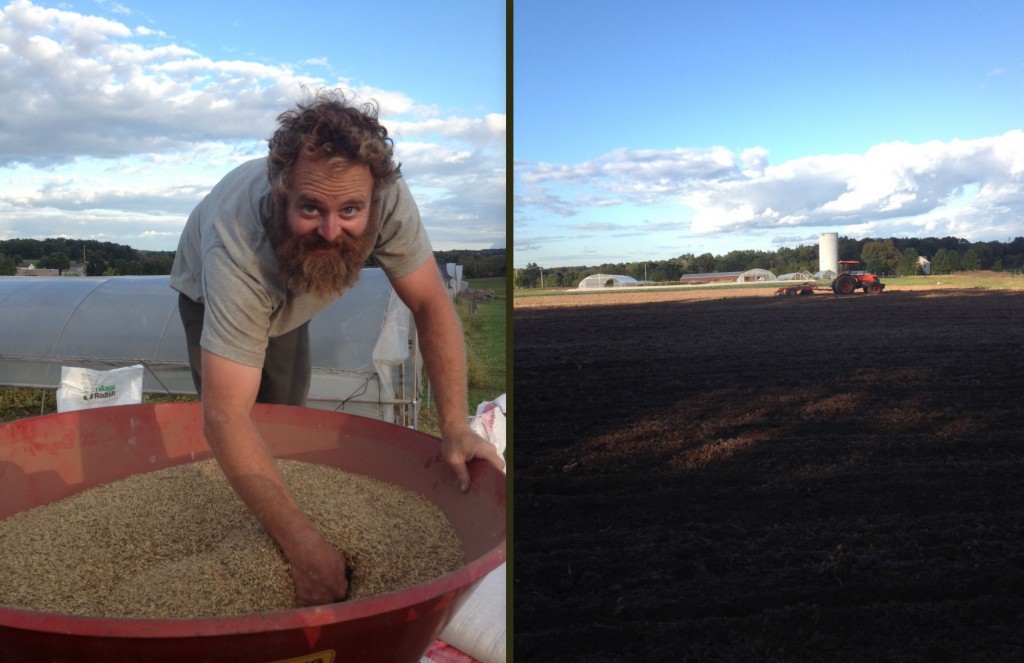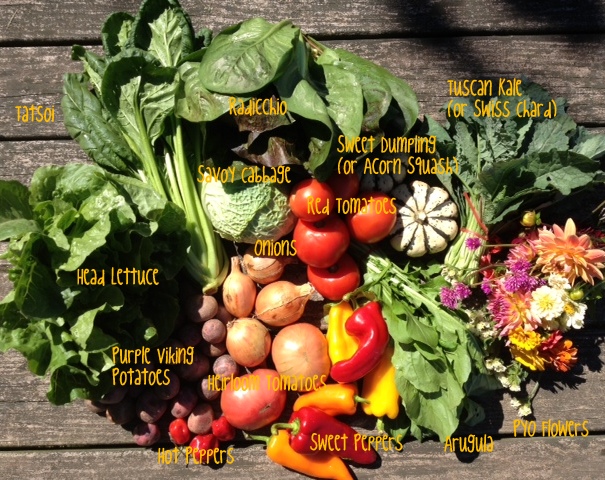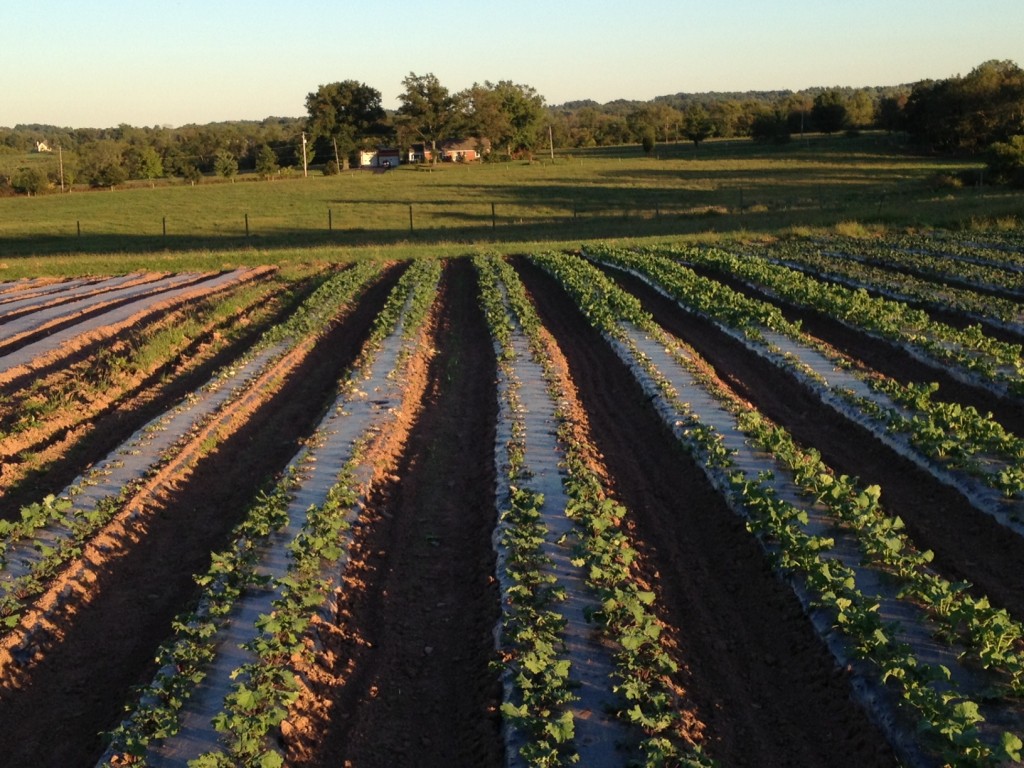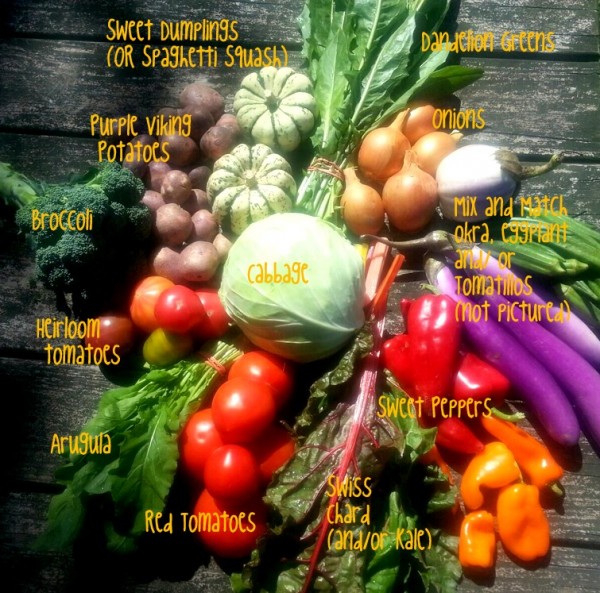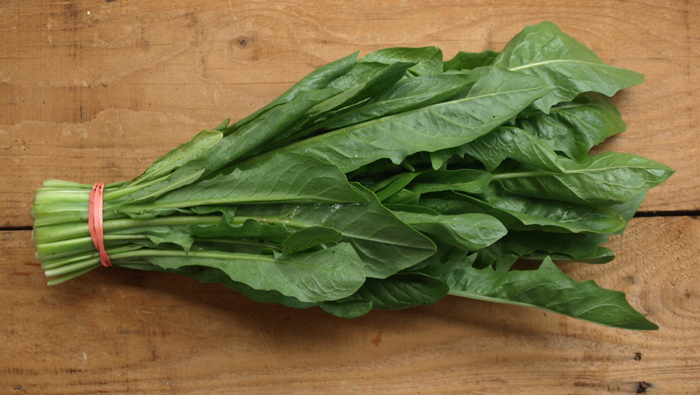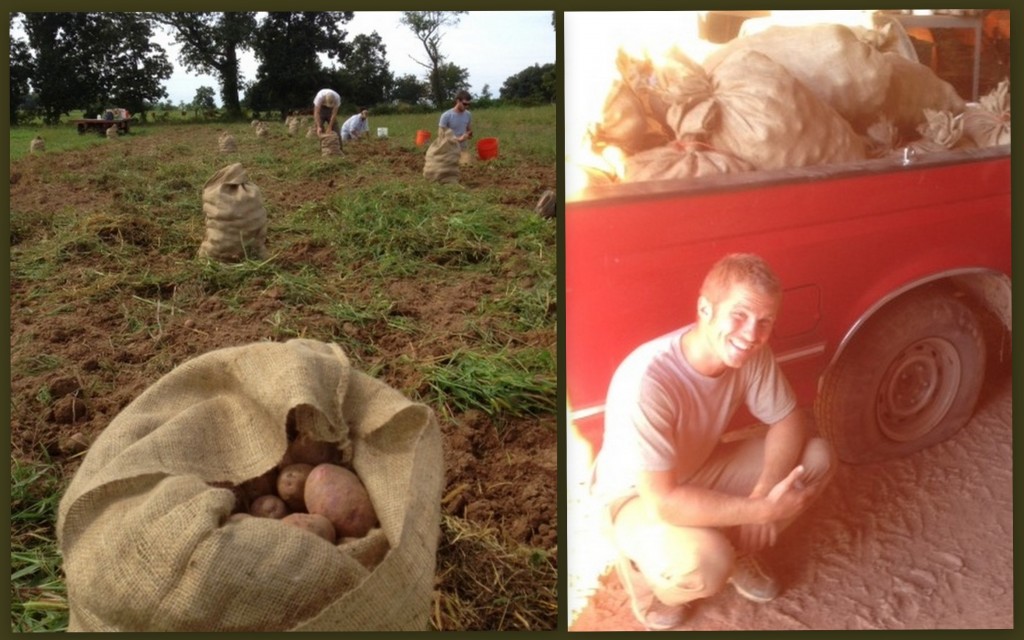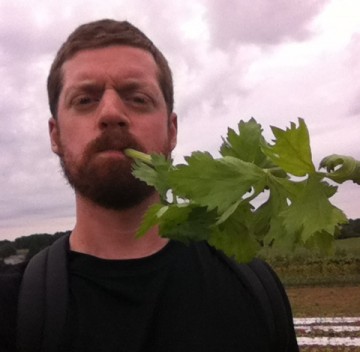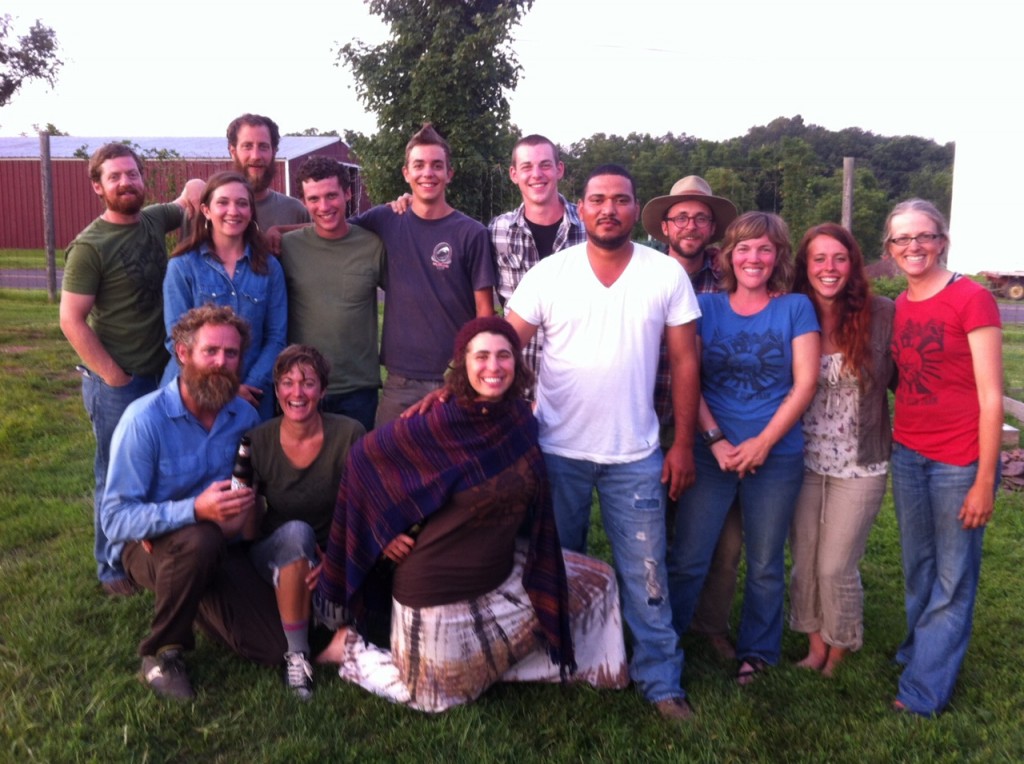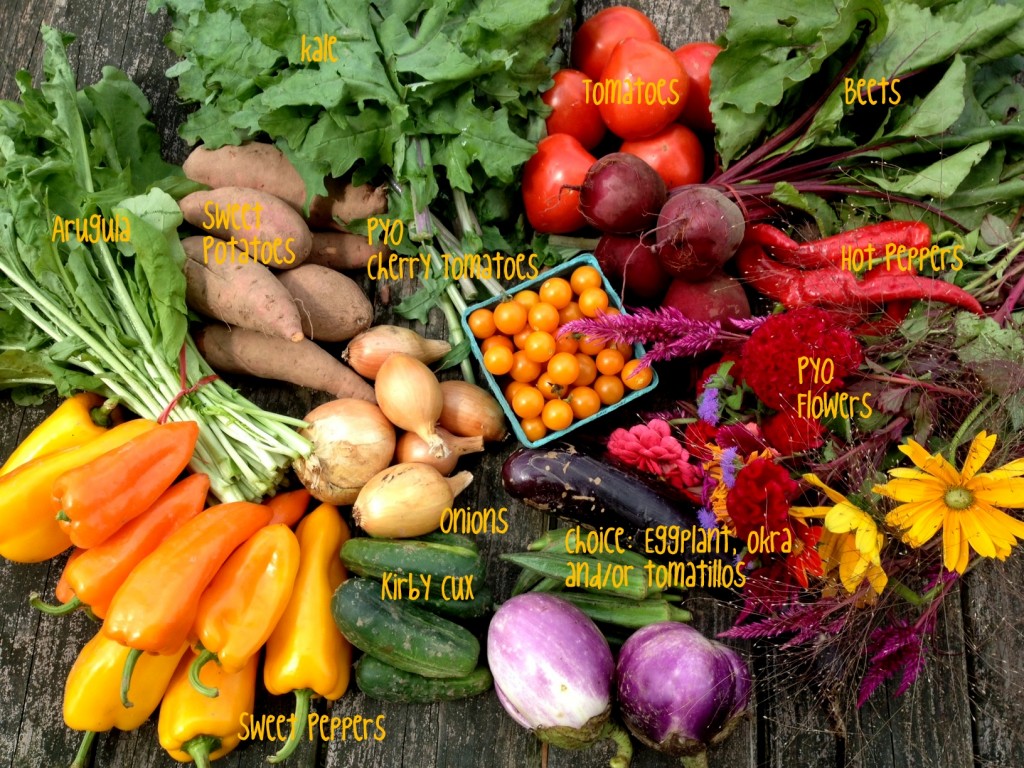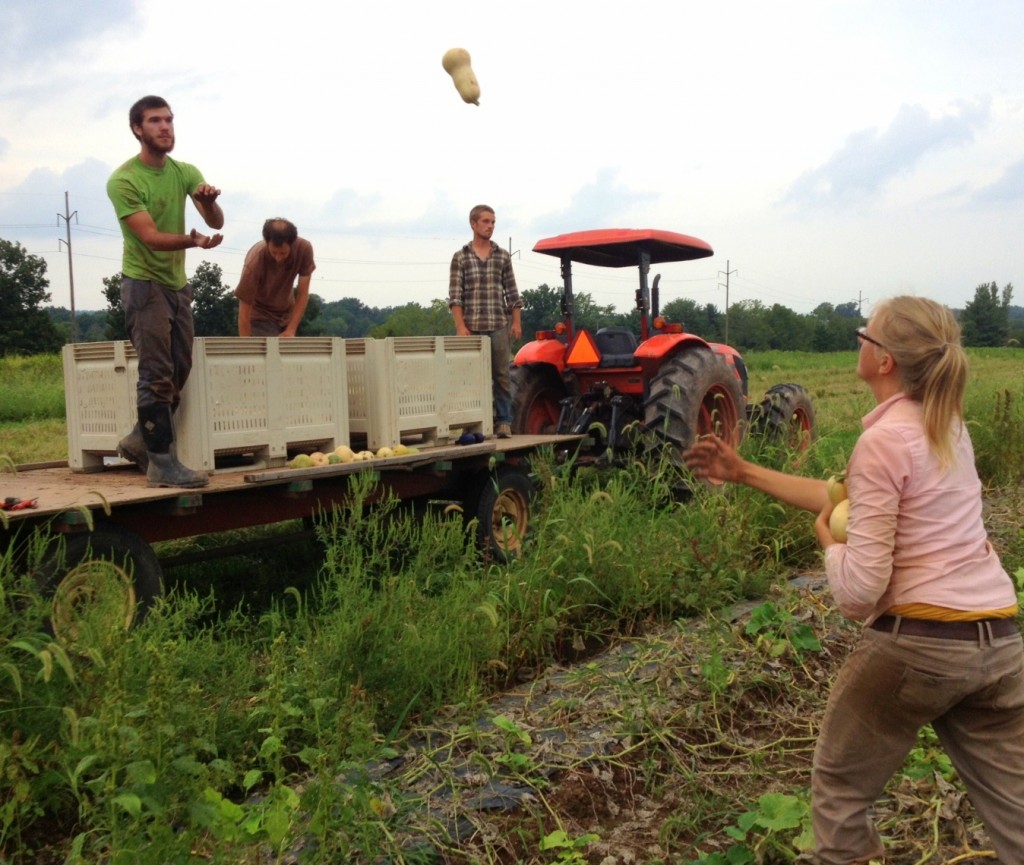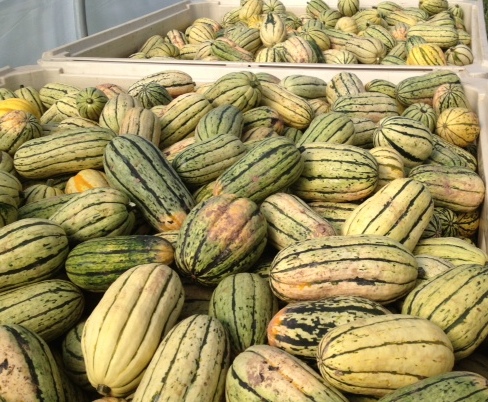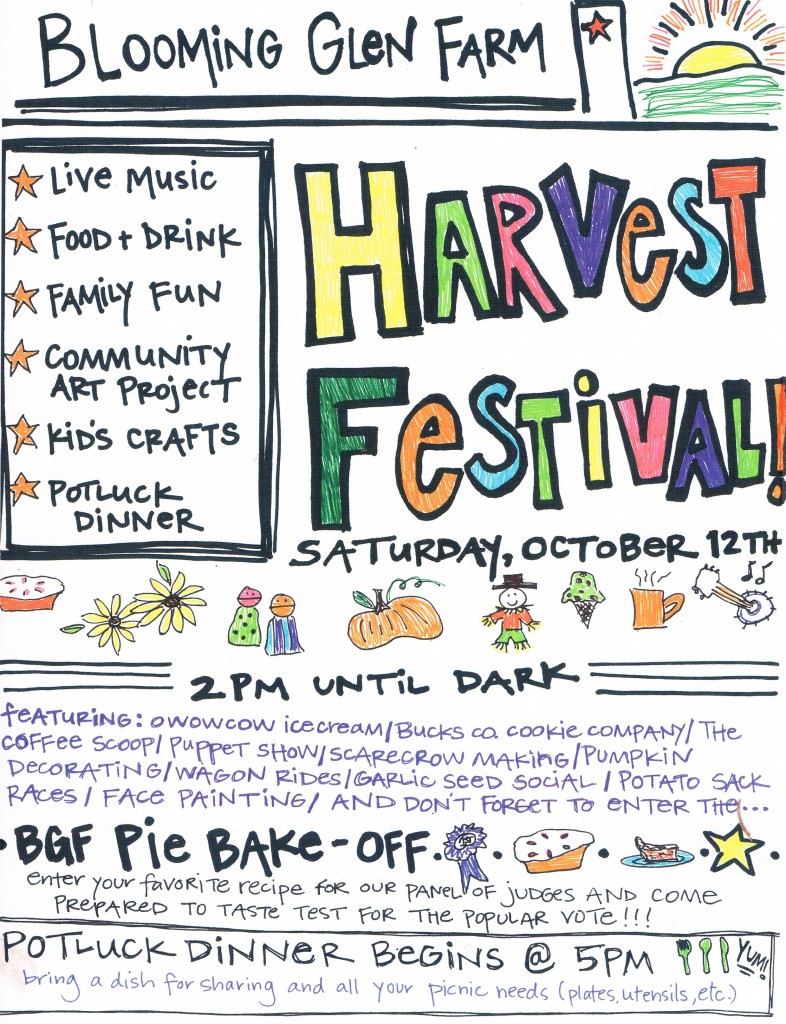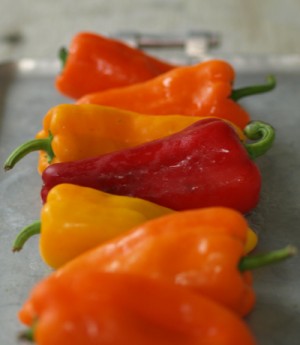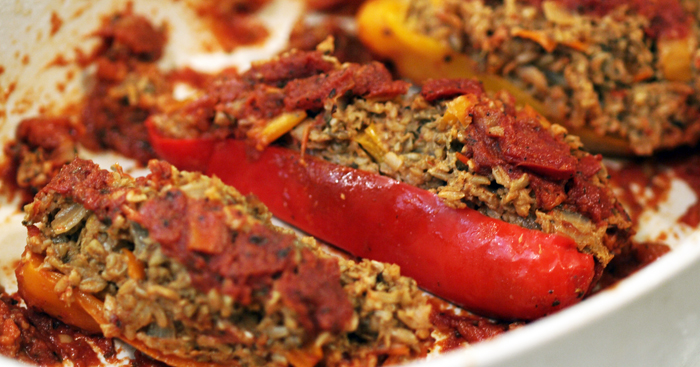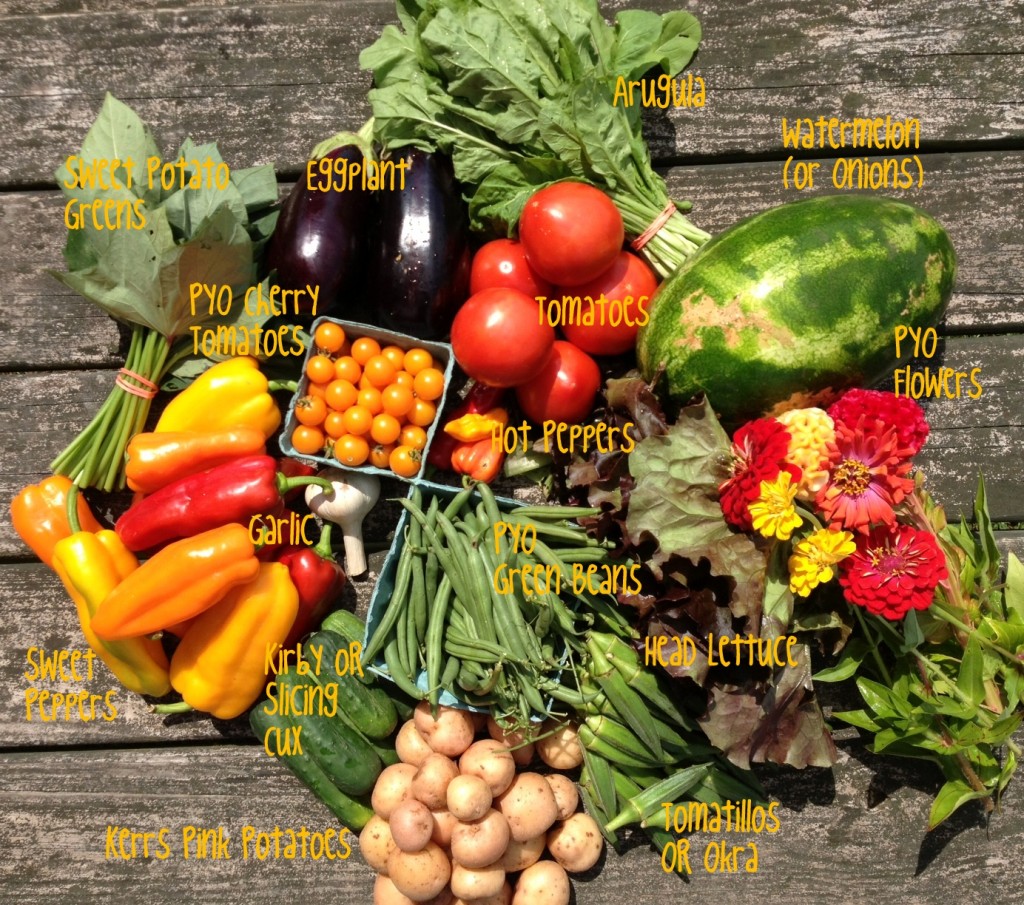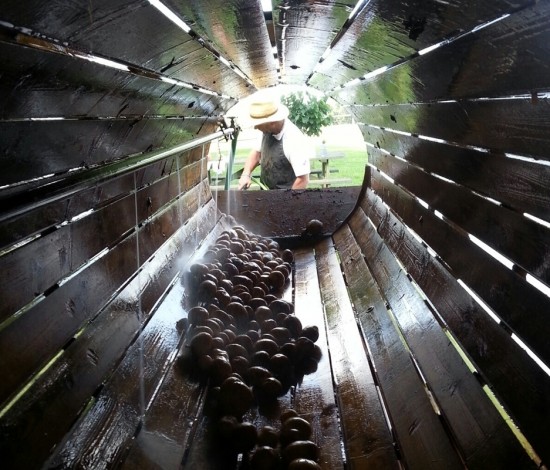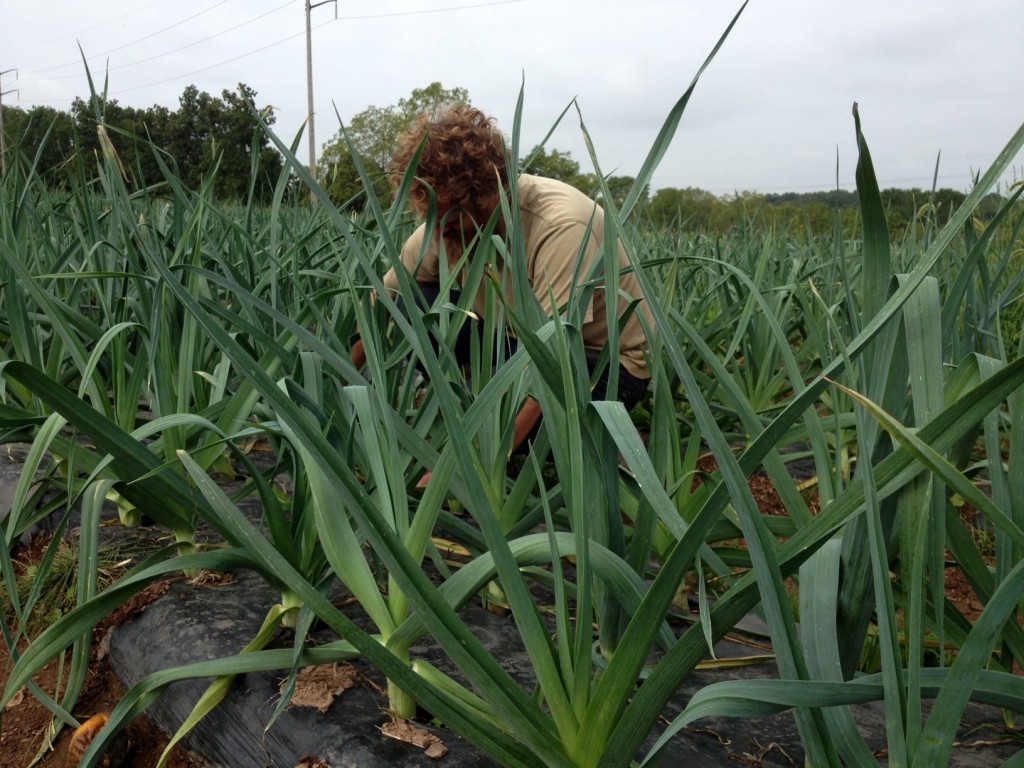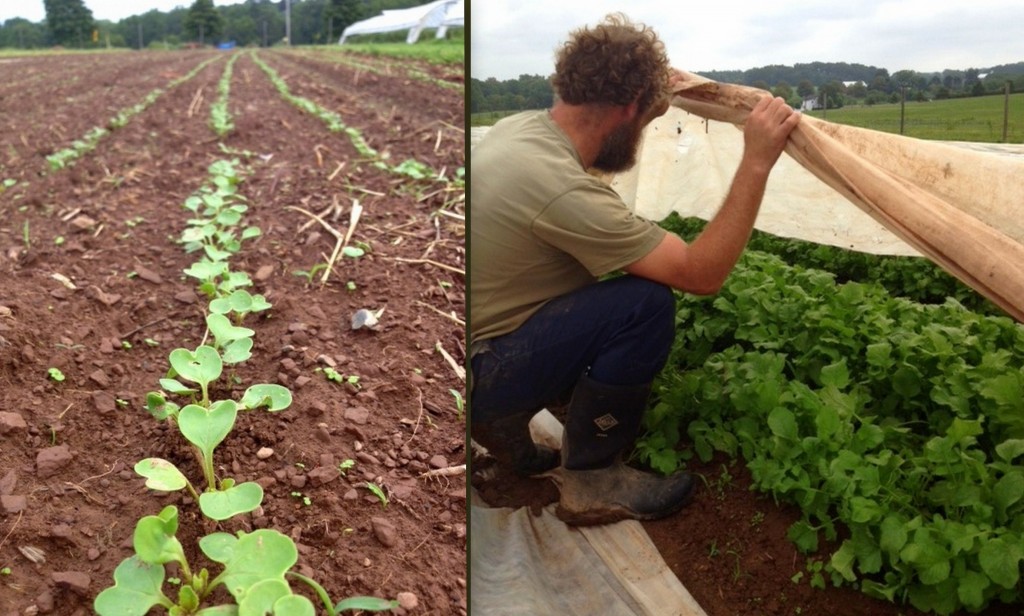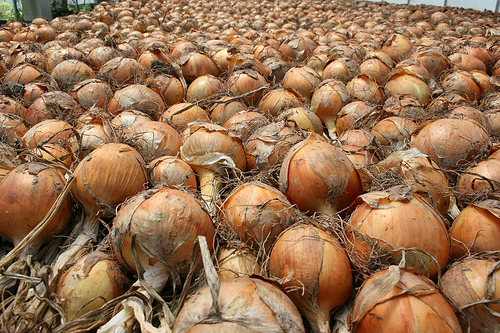02 Oct Meet our Crew: Robin Hernandez
One of my favorite things to do on the farm is harvest tomatillos. Just today I found myself with a black crate, walking through the tomatillo jungle, feeling the husks for ripeness.
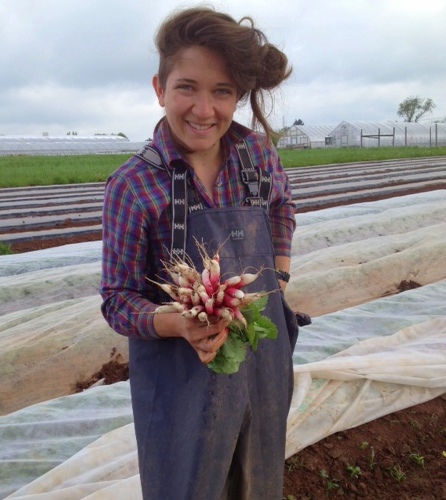 A tomatillo is ripe when it’s green bulge of a body pushes it’s leafy husk to the brink of splitting. And there is digging for potatoes; pulling up garlic cloves by their stalks; torpedo and sweet onions surprising us with robustness. Intimate interactions compose farming.
A tomatillo is ripe when it’s green bulge of a body pushes it’s leafy husk to the brink of splitting. And there is digging for potatoes; pulling up garlic cloves by their stalks; torpedo and sweet onions surprising us with robustness. Intimate interactions compose farming.
There were also strawberries with sunrise, which my boyfriend was not happy to help with, but he did! He also helped me move here, to Perkasie. We drove in a U-Haul on a snowy day in March, all so that I could become a member of the 2013 Blooming Glen Farm team. I was leaving my home on 53rd street in West Philadelphia; international house (a great movie theater in Philadelphia); a job I felt so fortunate to hold with Project HOME; tons of friends; some furniture; and a guinea pig.
But my departure felt like a new beginning and I believe that with my time here at Blooming Glen, I have only grown as a person. I do miss my home on 53rd street, and my great neighbors.
So many people have opened their homes and hearts to me this past growing season. I would like to thank all my coworkers, admiration abounds; to my family and friends for supporting me; and especially to Tom and Tricia- your vision is profound and important, thank you for letting me take part.
I don’t know what the future beholds. One day I’m planning for a return to the city, the next a puppeteer career, and last week an adventurous bike trip. But I continue to feel fortunate. I am fortunate to have been able to leave a full time job to join Blooming Glen; to have had a job; to have a job; to have a job where people care about me; to have had the opportunity to travel and attend college; to speak a second language, conversationally; to be accepted and tolerated; and to be able to change.
There are so many people I have missed, or have never met, but nonetheless have had a profound effect on my life. I am grateful for the experiences that have facilitated my belief in the dignity and worth of each person, like taking a class inside a maximum security prison, or being with the Zapatista Army of National Liberation in Mexico. In seeing society as a macro organism, I know that my choices as a United States citizen and consumer matter and will affect people across the world. A purchase is like a vote, and while I still contradict my intentions (and probably always will), I strive to participate in practices that contribute positively to the world, and as a white woman in America, often a choice in consumption is an easy place to begin.
Post written by Robin Hernandez. Photos by Tricia Borneman and Rebecca Metcalf.




